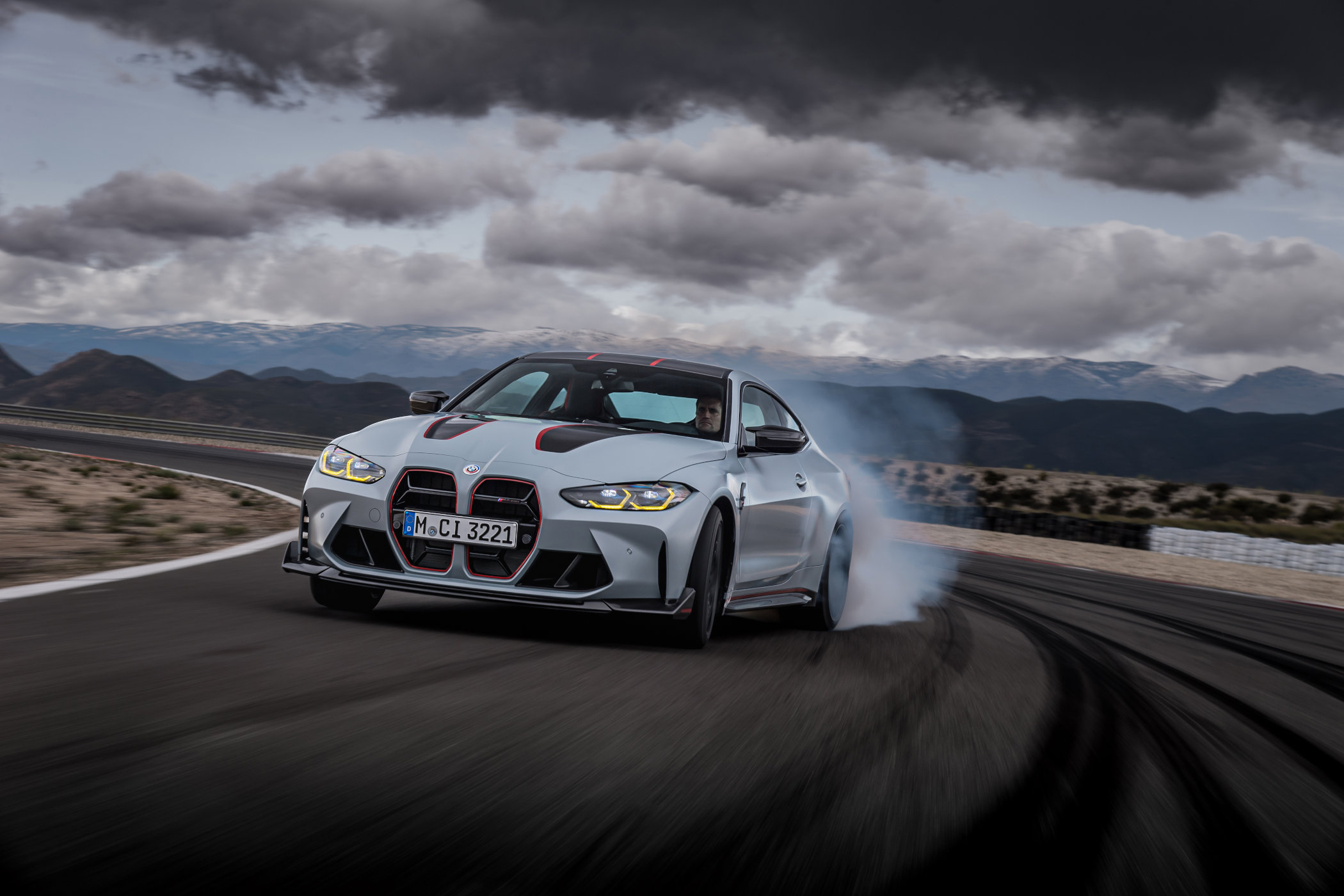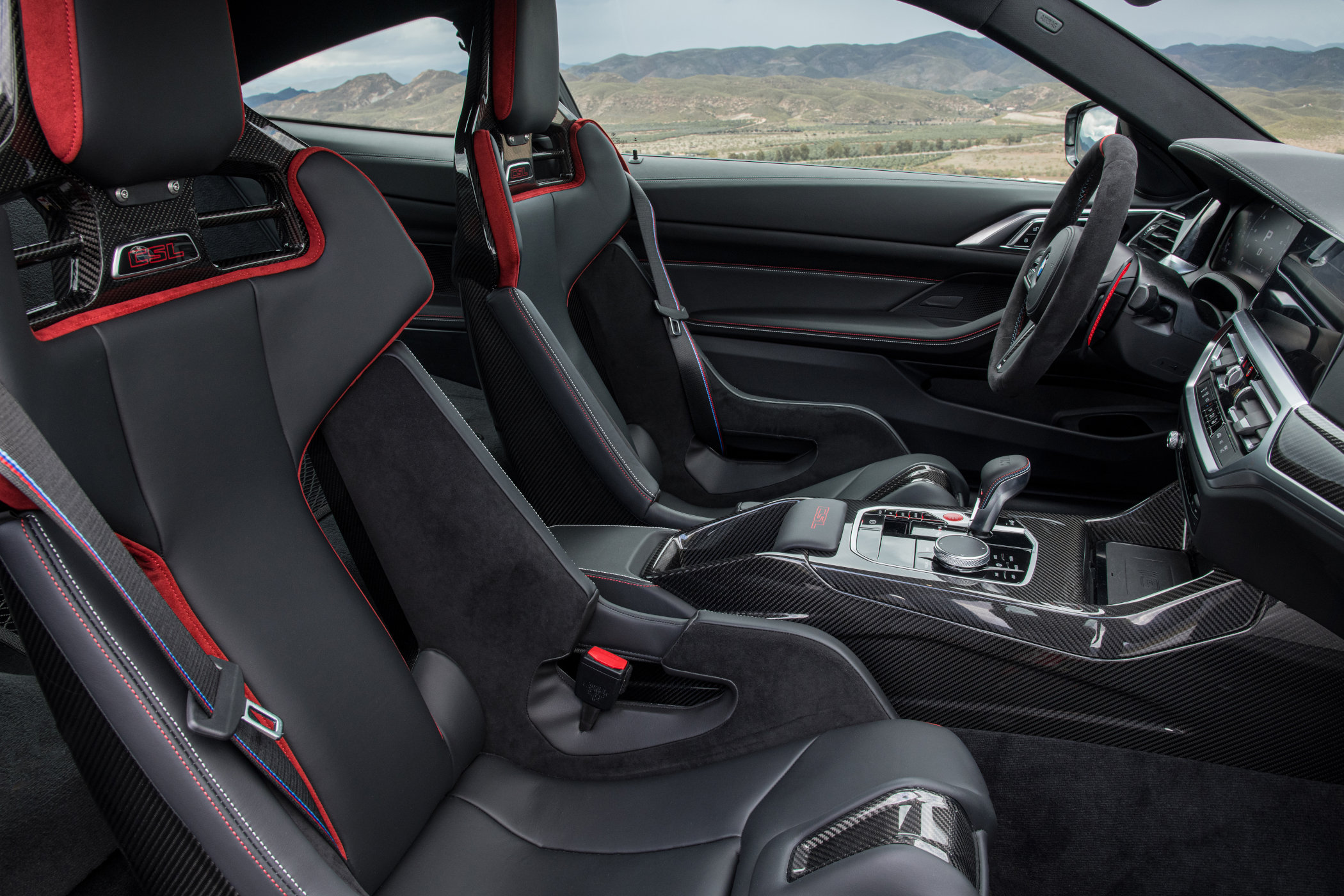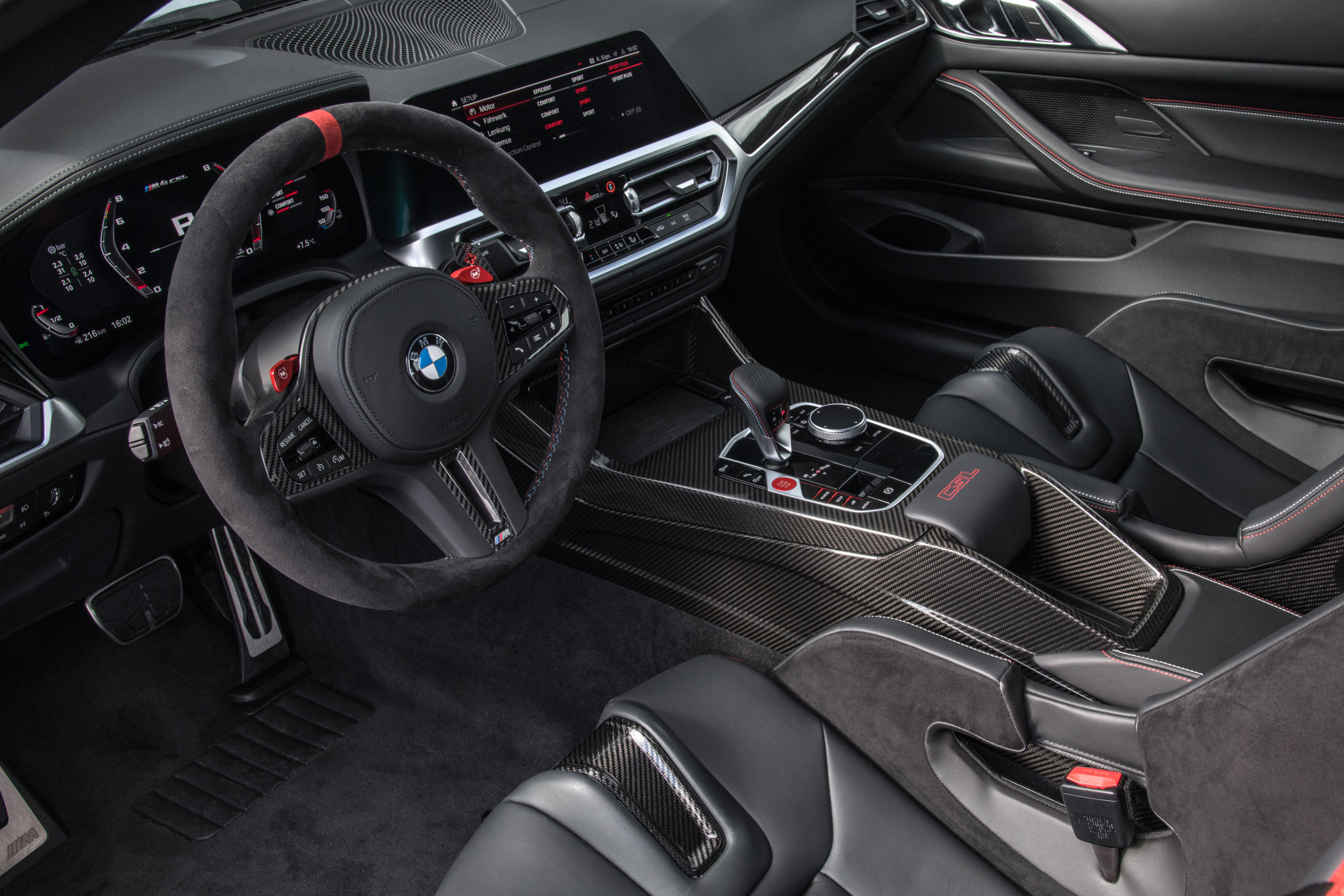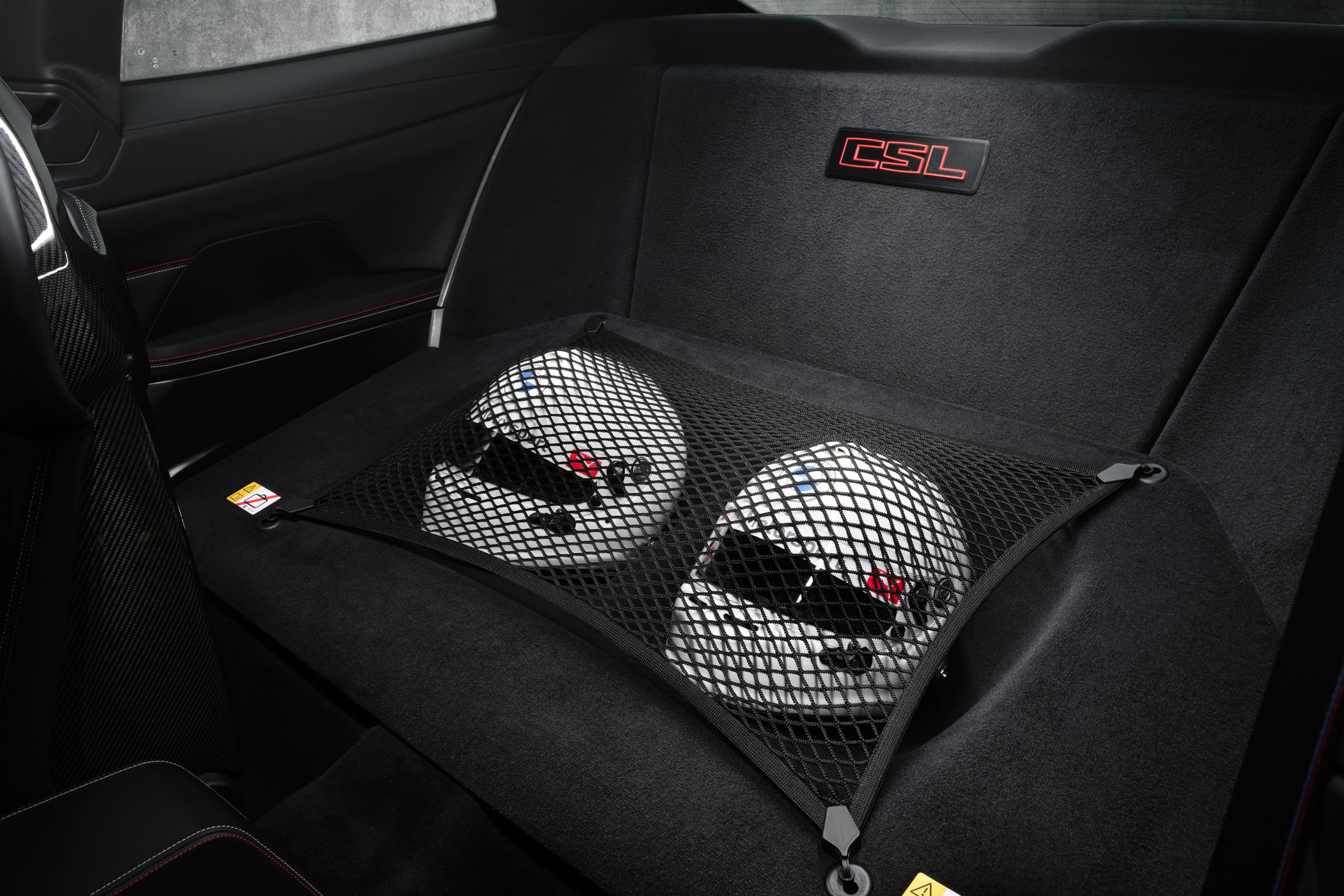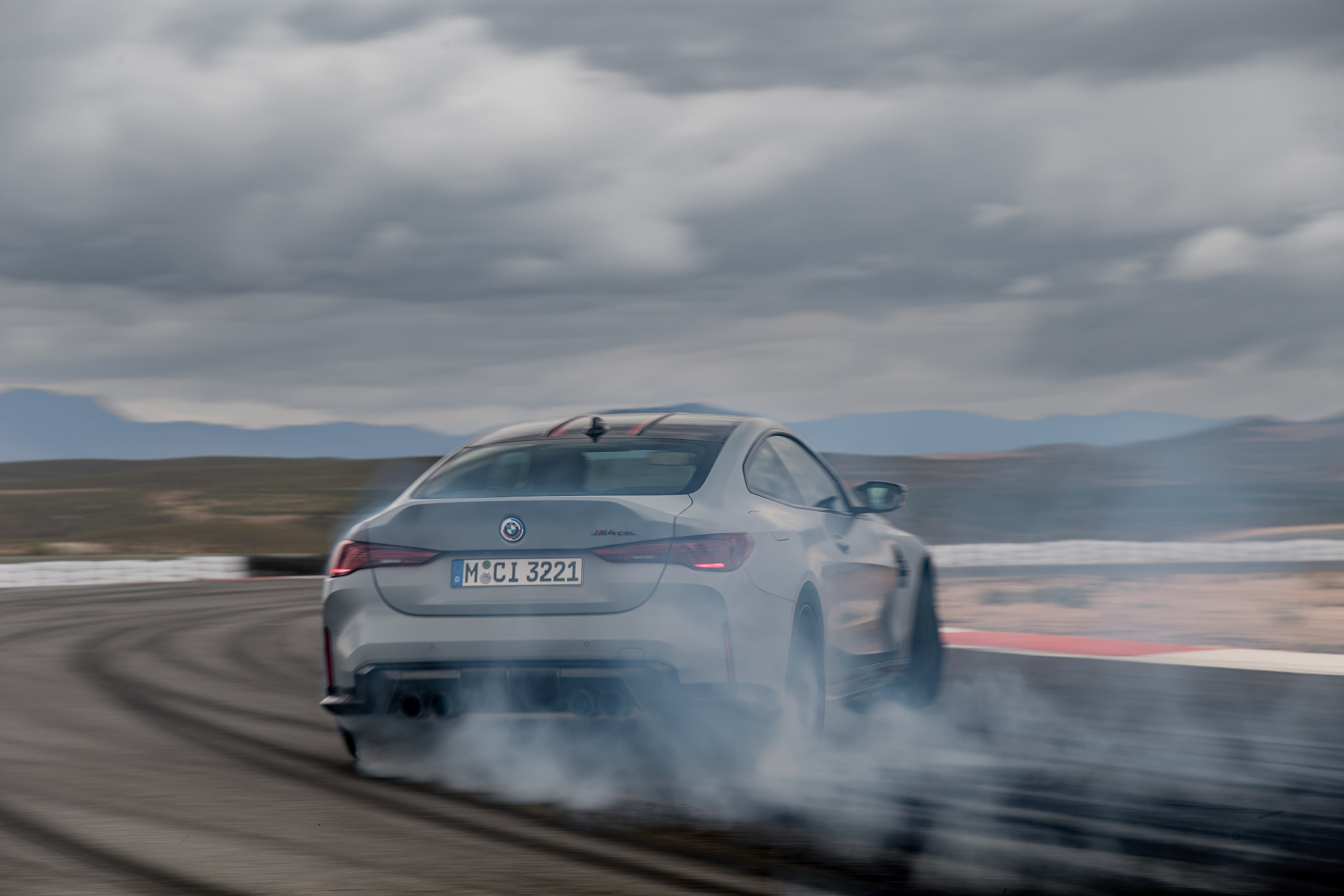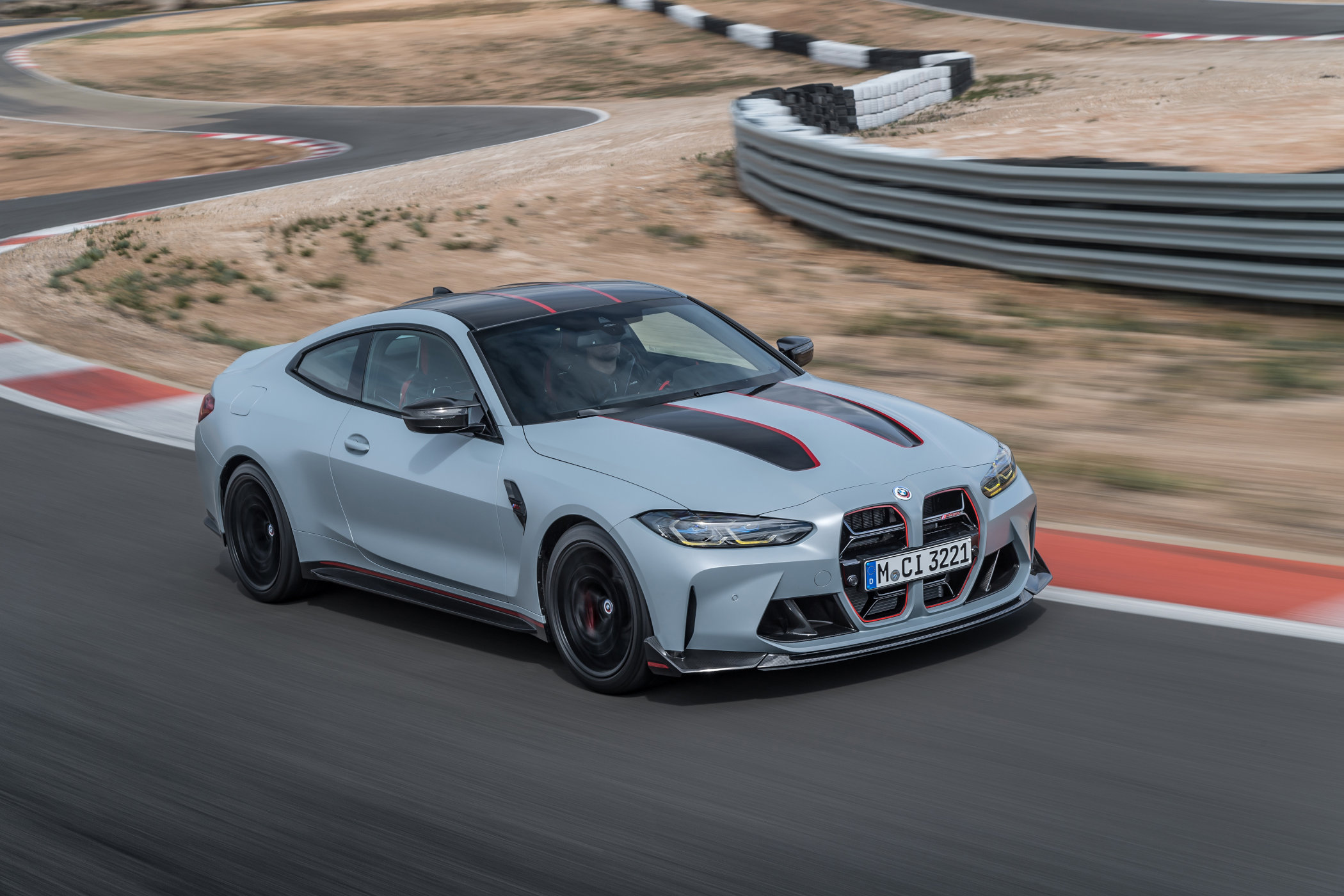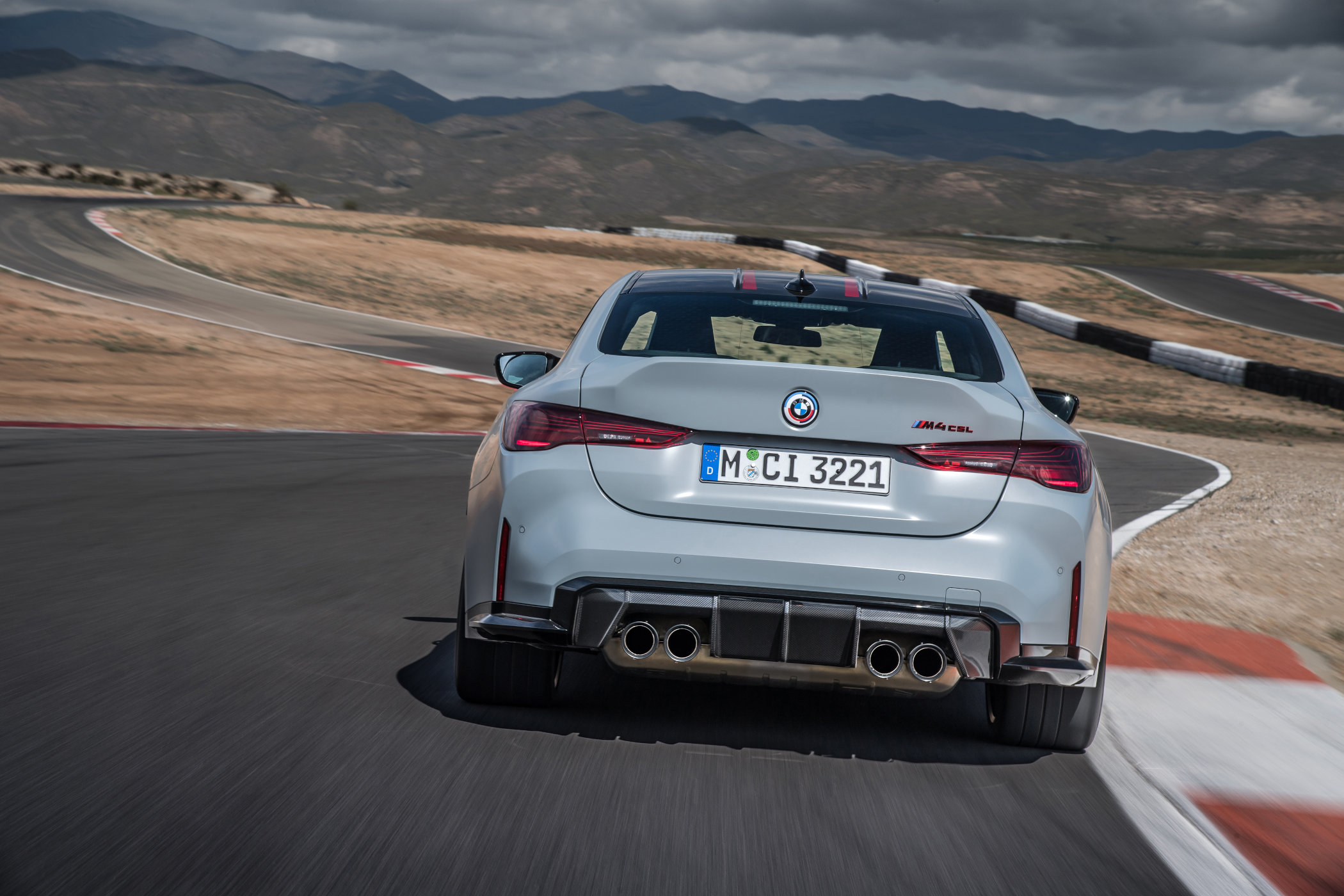Competition, Sport, Lightweight – BMW’s CSL recipe for excitement beyond BMW M
BMW’s way to build a lighter, faster and more track-honed sports car is indicated by three simple letters.
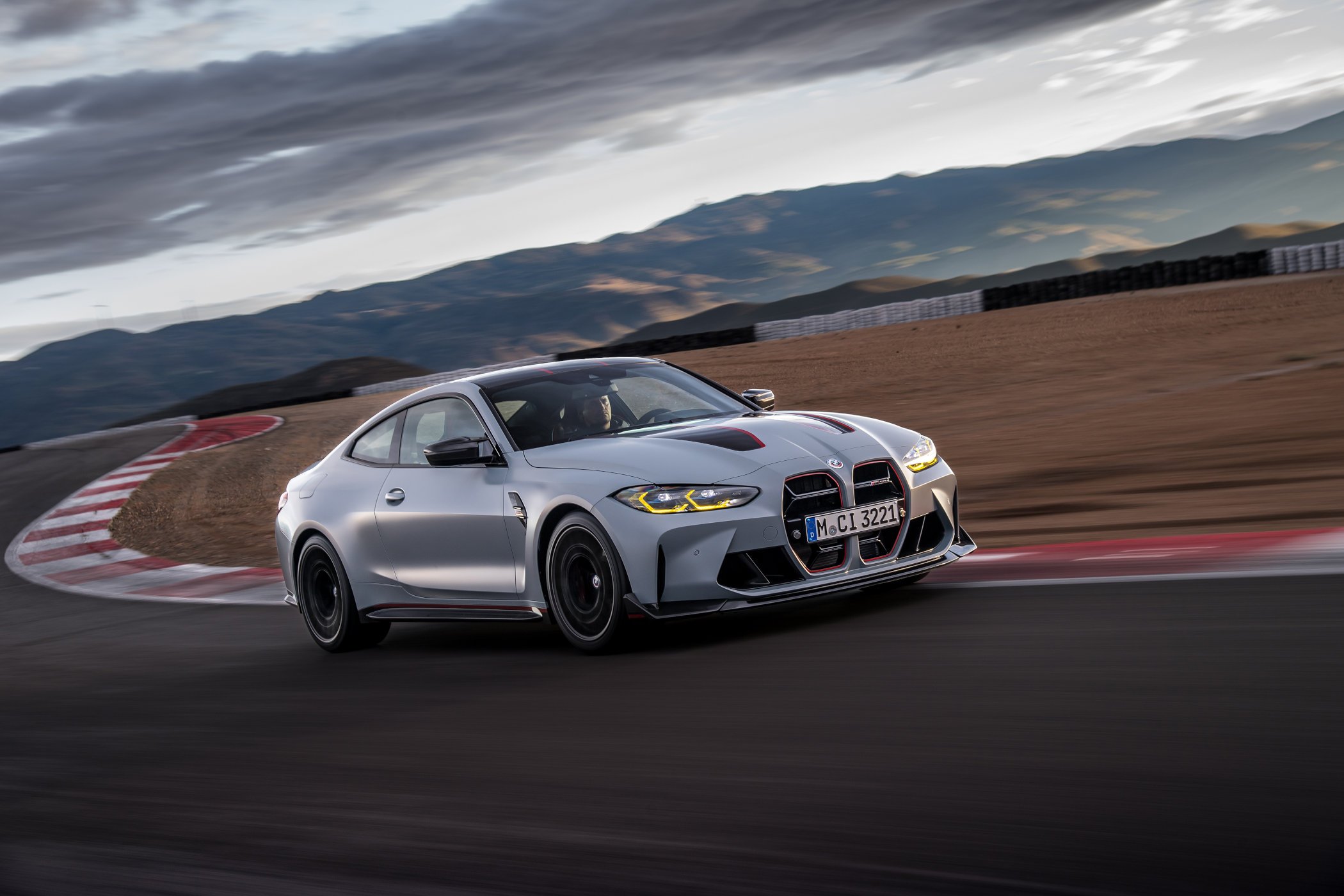
There’s no way around it, the current BMW design philosophy is…. questionable, to put it mildly. The large vertical kidney grills are the main culprits of the slightly off-beat look of current BMWs. It even causes as much, if not more banter from BMW fans and car guys than the Chris Bangle-designed BMW 5-, 6-series and 7-series did. Nevertheless, BMW is still all about the driving experience. The engine in the front, drive to the back, and a boatload of power to make you go sideways if desired. BMW’s latest weapon marks the 50th anniversary of BMW M GmbH and is called the BMW M4 CSL. And with its unveiling, BMW has shown a glimpse of past CSL prototypes that never made the cut.
CSL Origins
The letters CSL have always been reserved for the most special of BMW, indicating cars that are lighter, faster and more competition-oriented than its more regular counterparts. It translates to Competition, Sport, Lightweight, or (Coupé Sport Leichtbau in German). It can be traced back to BMW of the seventies, like the BMW 3.0 CSL, a homologation special built to make the car eligible for competing in the European Touringcar Championship.
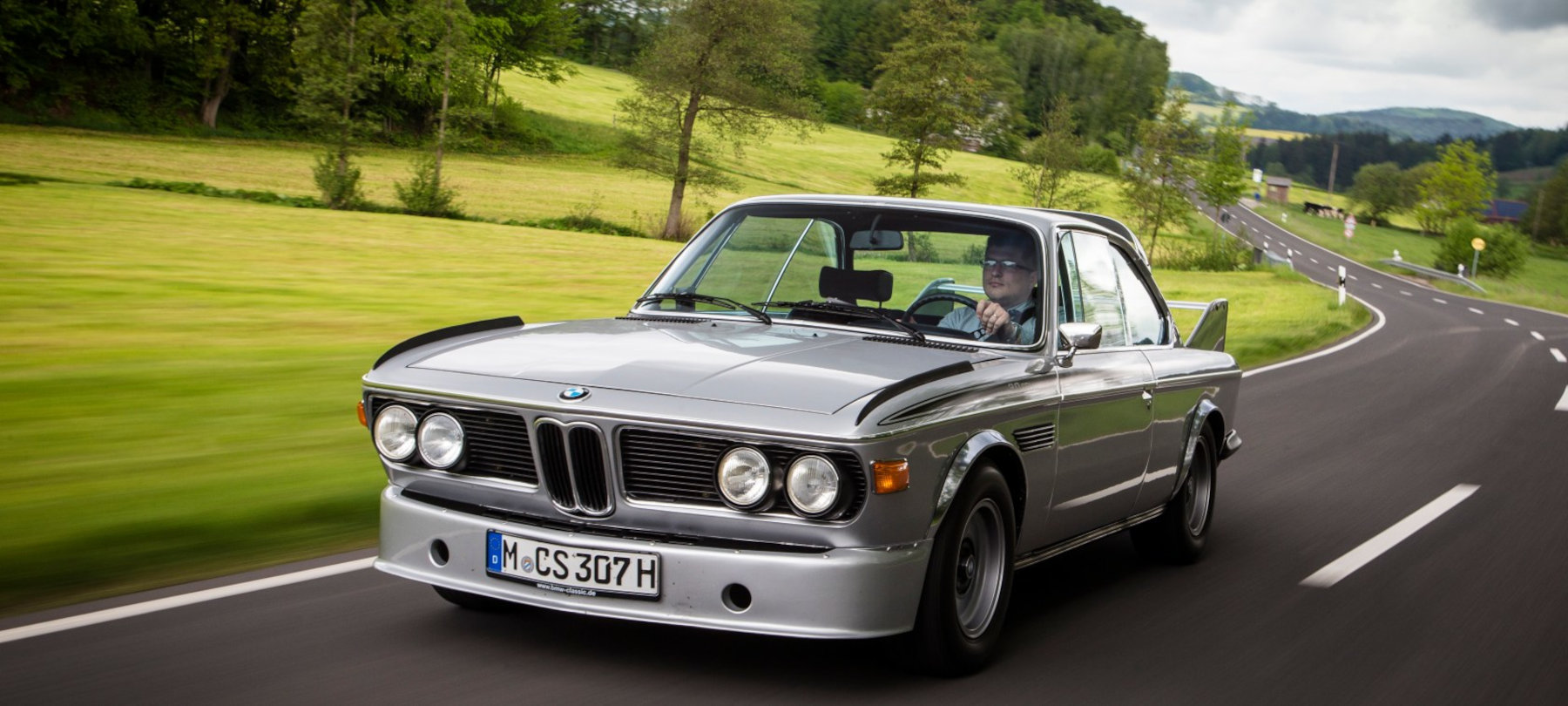
Dutchman Toine Hezemans won the 1973 European Touringcar Championship with it, bearing the iconic cream white with red and blue BMW M colour scheme. He also took home a class victory at the 24 Hours of Le Mans the same year, alongside Dieter Quester. These types of cars are often referred to as the “Batmobile” BMWs due to the fins over the front wheel arches, wide fenders and large rear wing. The road car had similar options, with a front air dam, fins and rear wing. If you bought one, you had to install the rear wing yourself as it was illegal on German roads, so BMW decided to store it in the boot instead of bolting it to the car from the factory.
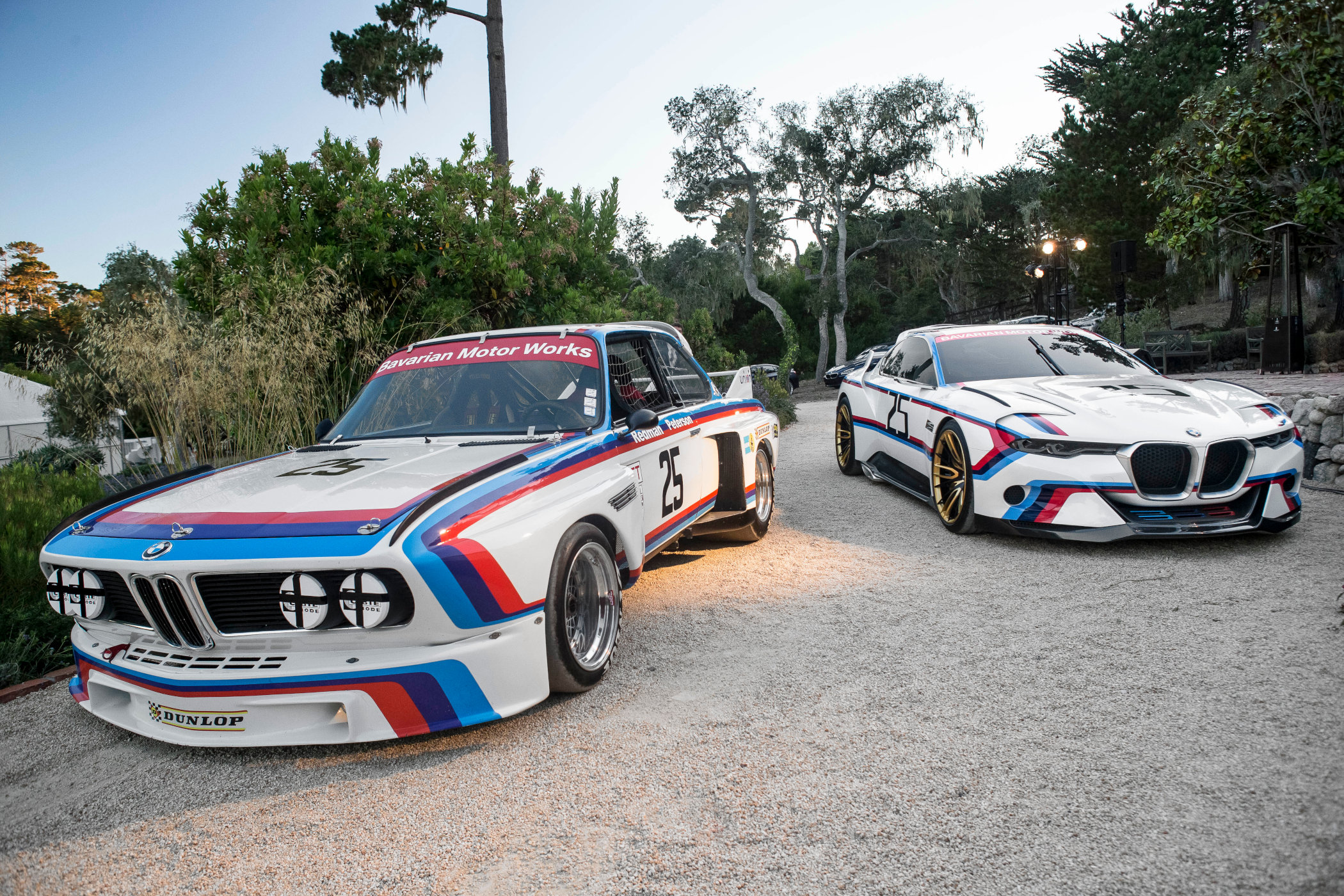
Other significant BMW CSL models are the E46-generation M3 CSL and a pair of BMW 3.0 CSL Hommage show cars built-in 2015. But, interestingly, there’s more from BMW that bears the M CSL moniker, however, it has never seen the light of day. More on that later, as I think it’s time we take a look at the new M4 CSL first.
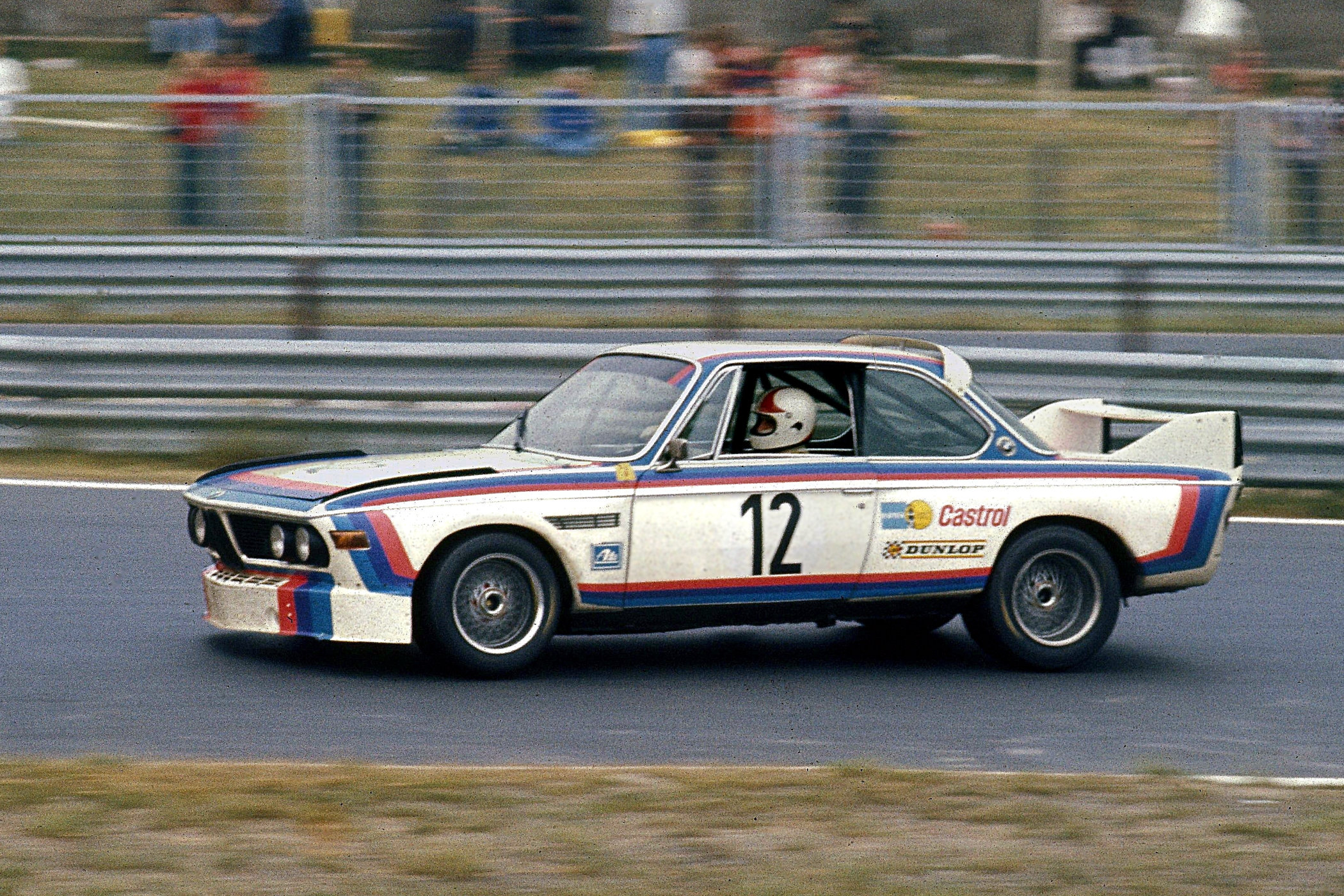
BMW M4 CSL
The all-new BMW M4 CSL is part of the 50th anniversary of BMW M GmbH, a subsidiary of the BMW Group and focused on performance enhancements based on regular BMW models. In 1972, the BMW M division was initially created to organize the company’s racing program, but over time also ventured into road cars. It is responsible for some of the most iconic touring cars ever made, including legends like the M1 and E30 M3. While the M-badge was initially reserved for very specific cars, in recent times there’s an M-variant of pretty much everything BMW builds, including the X5 and X7 SUVs.
The BMW M4 CSL is built on BMW’s two-door coupé, and according to BMW blends “old-school racing with innovative technology to create an inimitable performance experience”. To back up this claim, it is fitted with a race-derived twin-turbo 3.0-litre inline-6 engine producing a formidable 550bhp. This propels the BMW M4 CSL to 100kph from standstill in just 3.7 seconds and pushes on to an electronically limited top speed of 307kph.
On the inside, we find two lightweight bucket seats, storage space for a pair of helmets ( no space for your buddies here!), carbon fibre dashboard components and more. All are clad in black leather and Alcantara, finished with red accents to enhance the racing feel. Shifting up and down the 8-speed M Steptronic transmission is done with paddles behind the steering wheel, or completely automatic if you want. The outside has received numerous touch-ups, including an integrated spoiler in the trunk lid, front and rear bumpers with splitters and diffusers, quad exhaust tips, and a special Frozen Brooklyn Grey paint scheme with carbon fibre reinforced plastic roof and red accents.
The BMW M4 CSL has also gone on a bit of a diet and saves weight thanks to the aforementioned bucket seats (-24 kilos), rear-seat removal (-21 kilos), ultra-light alloy wheels (-21 kilos again), less soundproofing material (-15 kilos), carbon fibre reinforced plastic body panels (-11 kilos) and a titanium exhaust (-4 kilos). Overall it is 100 kilos lighter than the next lightest 4-series. Combined with the increased power and other performance upgrades, this undoubtedly makes for a rather sensational machine!
The upgraded suspension system and tweaked aerodynamics keep the car planted at high speeds and through corners, something that BMW has proven by sending it around the Nürburgring in Germany. This (in)famous racing circuit in the German Eiffel is used by pretty much all manufacturers of performance cars to hone the set-up and try and set new records year after year. And how does the BMW M4 CSL fare? Well, it completed the gruelling, undulating and twisting 20,8-kilometer track in a blistering time of 7:20.207. In the mid-range performance class, that’s an absolute record and not that far off cars like the Porsche Cayman GT4 RS.
BMW will only build 1,000 of these cars, at a sticker price of GBP 125,900 / USD 139,900 / EUR 165,200 (base price in Germany, subsequently different in other European countries due to tax regulations).
BMW CSL Prototypes
BMW M has recently allowed a glimpse of the cars stored in its secret garage, a “facility” seemingly all car manufacturers have. So just as a little encore to the 3.0 CSL and the M4 CSL we already covered, we take a look at the BMW CSL prototypes that have been revealed for the first time ever. Mind you, we’re talking about past generation BMWs here so nothing will ever come of it sadly. Still, it is interesting to see what could have been if BMW had the audacity to produce any of these. The cars are presented in a two-part YouTube video by BMW M, and it’s rather cool stuff!
In total, there are four very special BMW CSL Prototypes shown, which include an E46 BMW M3 CSL V8 Prototype, E60 M5 CSL V10 Prototype, E63 M6 CSL V10 Prototype and an F87 BMW M2 CSL Prototype. Out of all of these cars, the E46 M3 CSL V8 Prototype is perhaps the most bonkers, as it ditched the beloved straight-6 engine in favour of the 4.0 litre V8 used in bigger BMWs, and the BMW E46 M3 GTR. And again, the reason for the M3 GTR’s existence is to go racing, so it basically comes full circle with this one.
The M5 and M6 CSL V10 Prototypes are based on the E60/E63 generation of the M5 and M6, fitted with a beefed-up version of the glorious 5,5-litre V10 engine. With increased power, active aero (M6 only) and less weight, these would have been a real riot to drive, I’m sure! The M5 CSL V10 sees its power increase from an already meaty 507bhp to a bonkers 630bhp.
The final car in this quartet of one-offs is the F87 M2 CSL Prototype, based on the 2018 BMW M2 Competition. This small two-seater was built alongside the M2 CS (for ClubSport) and both were internally pitched, with the slightly more docile and user-friendly M2 CS getting the green light. Would be fun to have seen a lightweight, track-focused 450bhp pocket-rocket M2 CSL but it wasn’t meant to be.
For more information, please visit BMW.com, BMW-M.com or BMWBlog.com

